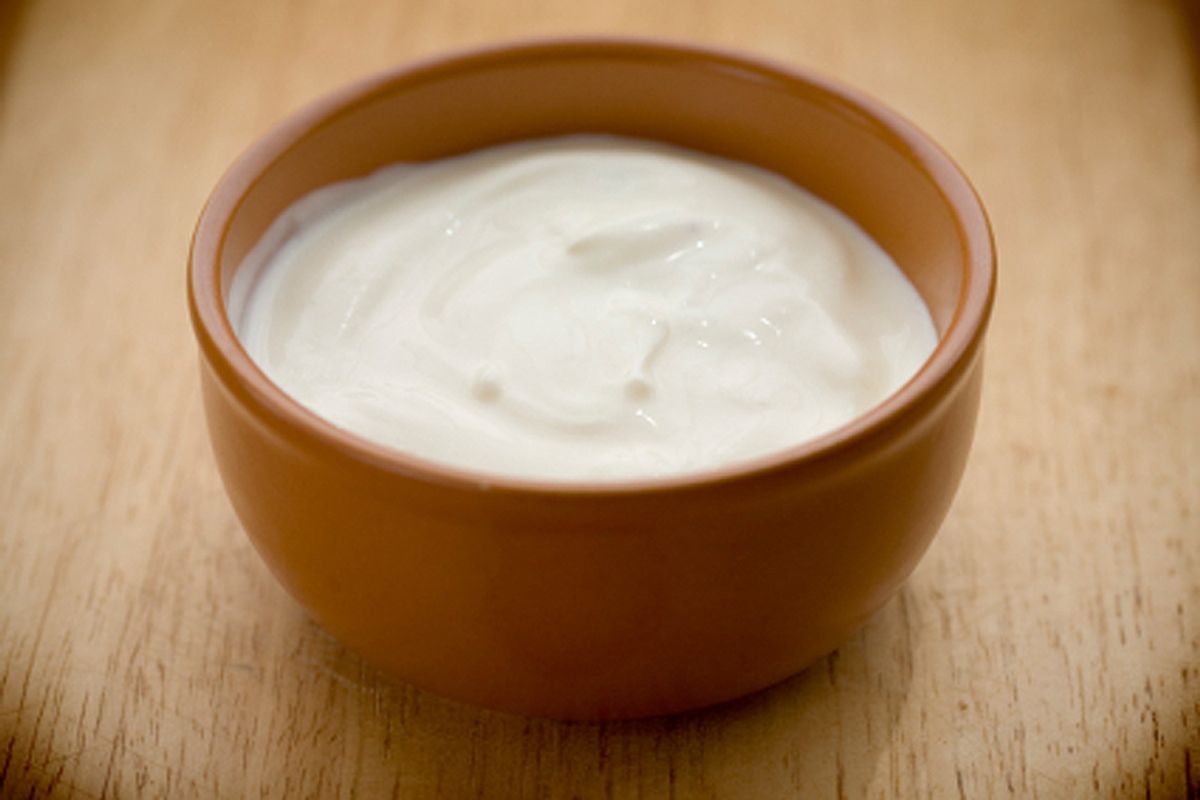Take some milk -- your choice, but I really, really suggest whole milk; the fat helps the texture and it balances the tartness, giving you a delicious, rich flavor that lingers. Heat it up. I stir it constantly while this is happening, ostensibly so that the bottom doesn't scorch, but really it's because I find the smell of warm milk to be so lovely, one of those fundamental pleasures you can find yourself missing for years. When it's 180 degrees F, or when you start seeing some bubbles and the top is steaming noticeably, take it off the heat, pour it into the jar, crock or bowl you want to keep your yogurt in, and let it cool to 110-120 F, or until you can hold your finger in it for 10 seconds without it getting too uncomfortable. It should be hot, but not painful, unless you have particularly delicate or asbestos-y hands. (And in either case, make sure they're clean first.)
While the milk is cooling, set up your keep-it-warm situation. Some people like to use a cooler, like an Igloo, filling it with towels and maybe bottles of warm water. Food science guru Harold McGee suggests pouring the hot milk into an insulated canister or jar; he likes to just wrap his jar in towels. I like to do that and keep it in my oven, heated only by the pilot light. I sometimes leave it on my radiator, sitting on top of a nice thick book. You'll find a warm spot in your home, but don't really sweat it. The worst that will happen if you end up putting it in a spot that's not quite warm enough is that you might have to leave it out for a few more hours.
Take one tablespoon of active-culture yogurt per pint of milk. (Most yogurts you can buy will work, but just make sure the label that says that there are live cultures.) Mix the yogurt with a little bit of the milk in a separate bowl. When it's smooth, stir that into your warm milk, give it a good stir, cover it with plastic wrap and place it in your snug little warm spot.
After four hours, depending on the culture and how warm you kept it, the milk should be set into something yogurty, but the taste may still be quite mild. Here is where you can exercise your aesthetic choice. The first taste of warm, just-cultured yogurt can be magic. Tender like the softest custard, it's sweet, creamy, eternally round milk, leaving you with the aftertaste of a soothing, buttery sip. I wouldn't blame you if you put it in the fridge now, to keep it from getting any sourness and to firm up the structure. But since I like a bit of tartness, I leave it hanging out in my pilot-light-warm oven for another 3 hours or more, occasionally turning it on for like 30 seconds just to warm it up slightly. When the yogurt is pretty much as tart as you like it, refrigerate it. (Don't worry about the little bit of whey that will seep out eventually; either stir it back in, drink it, or use it in cooking.)
(Note that these times are really pretty loose, and can vary greatly depending on how warm you keep the milk, how active your starter yogurt culture is, etc. If it doesn't thicken up after 8 hours or so, try adding some more starter yogurt and gently warming up the jar by dunking it in a warm-water bath, and leave it out for another few hours.)
Enjoy the yogurt, but remember to keep a few spoonfuls of it for your next batch, when this one is running low and you have more milk lying around. I don't know exactly how the tradition of eating yogurt for breakfast started, but it's a lovely symbol. Mornings are about renewing, and yogurt is a perfect symbol of rejuvenation -- of making old milk new again, living and breathing and good.

Shares